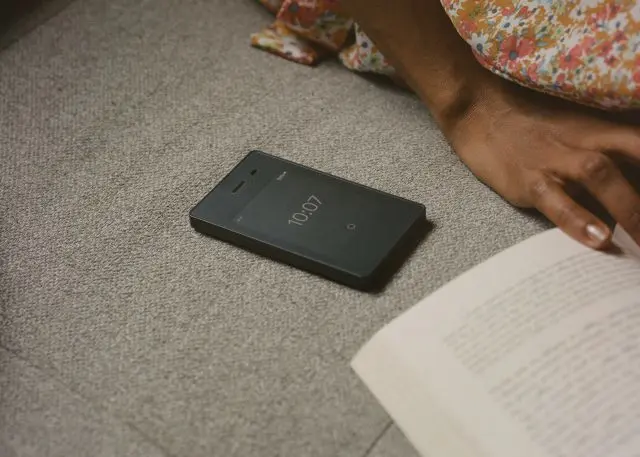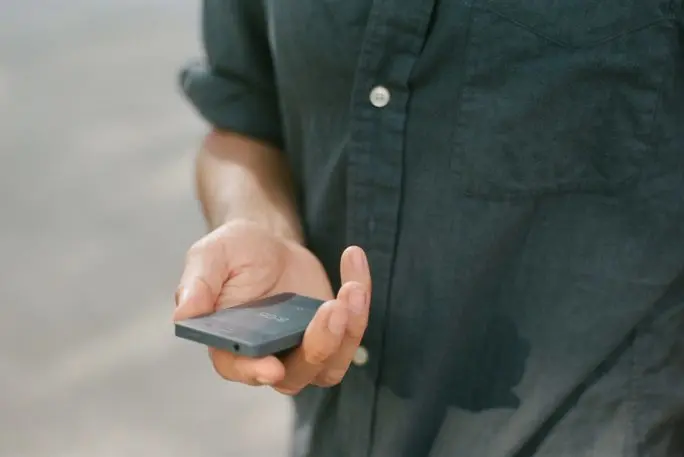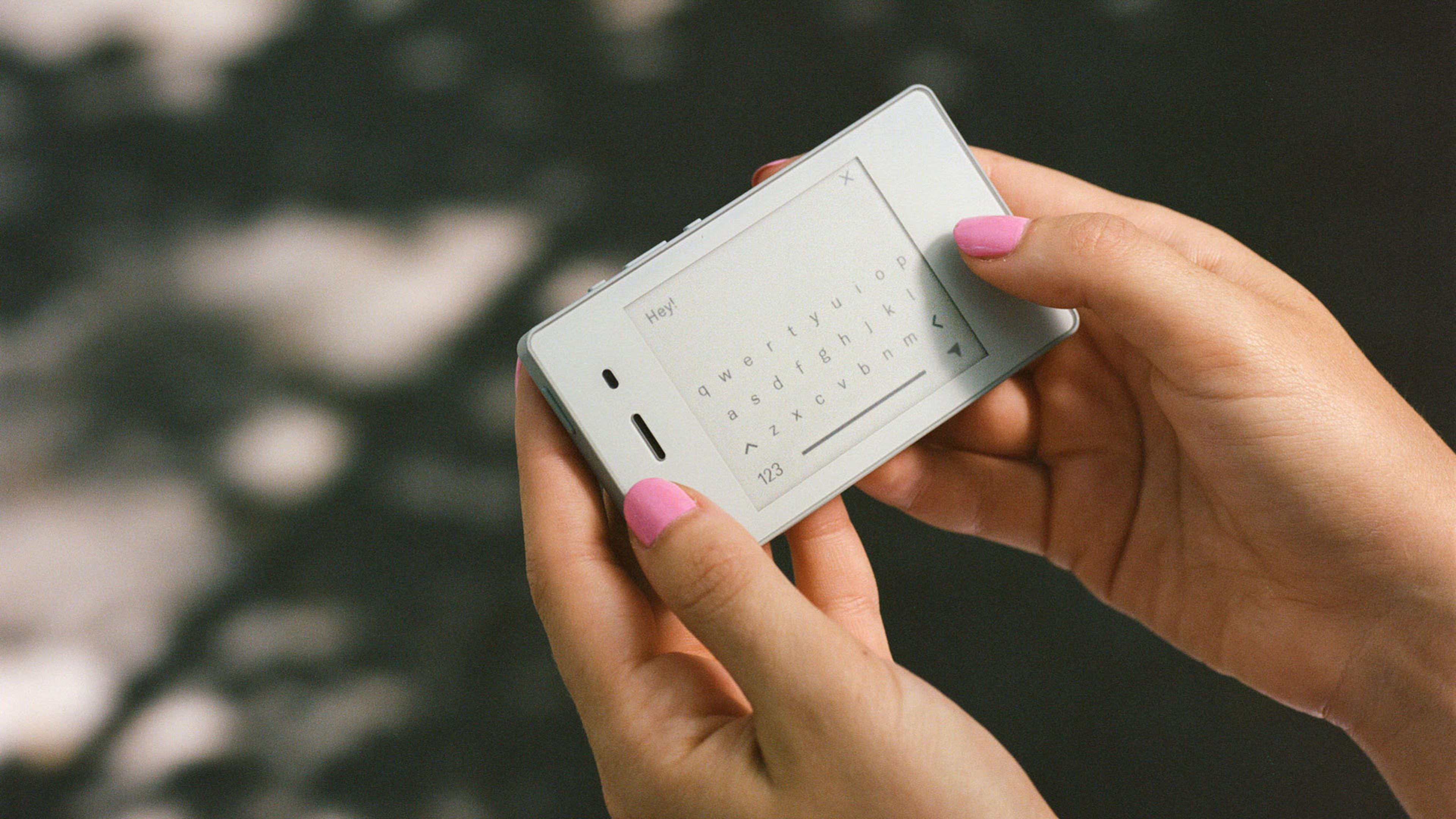When did you last use a phone that was just, you know, a phone?
For me, it was back in 2001 or thereabouts. I don’t recall the model, but I do remember that I gave it up for a Kyocera QCP-3035, which had a rudimentary built-in app store. That led me down the path through multiple BlackBerrys, Treos, and iPhones to the Pixel 3 I presently tote.
Over the past week, however, I’ve been trying the Light II. The size of a slim business-card holder, it doesn’t have an app store. Or a color display. Or even one camera, let alone several. Or anything, at the moment, besides the ability to make and receive phone calls, send and receive text messages, and set alarms.

Hollier and Tang say that some people might choose to use a Light II exclusively, but it’s fine if the Light II is your second phone, the one you take when you don’t want a gadget in your pocket calling your name. “Right now, it’s like, smartphone or old flip phone,” says Hollier. “There isn’t really an in-between. That’s where we see ourselves as an option. And we also are self-aware enough to know it’s not the phone for everyone.”
A critical mass of people think the Light II deserves a shot. Light has started shipping phones to backers of its Indiegogo campaign, which raised $3.5 million from more than 10,000 backers. (In addition, the company has scored $8.4 million from investors, including the world’s most famous operator of smartphone factories, Foxconn.) The Light II is now available for preorder to new buyers, who will pay $350 for it–about the price of a respectable midrange smartphone. The company also offers a $30 a month service plan, but the phone is unlocked, and you can simply pop in your own SIM card.

A little less light
As its name suggests, the Light II is a follow-up to Hollier and Tang’s first device, the Light Phone, which raised $415,000 on Kickstarter in 2015. The original Light was even more stridently minimalist than the new model, looking a little like a sleek pocket calculator, limiting you to a 10-number address book, and denying you the ability to send text messages.
The whole idea was “polarizing,” admits Hollier. But it turned out that some folks bought into the dream but couldn’t quit the modern smartphone cold turkey. “We had people coming back and asking for one more feature, or two more features,” says Tang.
Enter the Light II. Though the most distant of cousins to today’s smartphones, it’s capable of running apps, with a monochrome E Ink touchscreen, Wi-Fi and Bluetooth, and—running under the surface—Android. Gray and unapologetically plasticky (there’s also a white version), with an interface devoid of graphics except for a few icons, it reminded me of a forgotten PalmPilot rival from the mid-1990s.
And though I would have been wowed by it back then, I didn’t love it in 2019, even just for phone calls and text messages. It’s sluggish, which may be at least in part an artifact of the E Ink screen. (The most familiar E Ink device is Amazon’s Kindle e-reader, though I found the Light’s version to be slower, murkier, and more prone to ghosting than those on modern Kindles.) Calls sounded tinnier than on my Pixel, and tapping out text messages on the dinky onscreen keyboard (which involves rotating the phone into landscape orientation) was a typo-prone chore.
Hollier and Tang decided to unify the logs of phone calls and text messages on one screen, which sounds like an intriguing act of simplification—except that there’s no way to tell if a particular item is a call or a text without opening it, making the whole experience convoluted rather than streamlined. A web-based dashboard let me import well over 1,000 contacts, but it put them all on the phone regardless of whether they included phone numbers, and there’s no way to curate the list by identifying certain individuals as favorites.
Some of these issues are fixable. Light is still polishing up its software and plans to push out updates that may be available by the time Indiegogo backers start receiving their phones. Other improvements may come after the company has gotten feedback from its early adopters.

Not that Light wants anyone to think it’s saying you should lard your phone up with apps. In fact, there will be a hard limit to how many you’ll be able to install. “We will always encourage our users to not add the tools,” says Hollier.
In other words, if the iPhone changed cellphones by telling us “there’s an app for that,” the Light II’s mantra might be “there isn’t app for that yet, and might never be—but even if there is, we aren’t going to goad you into using it.”
I’m trying to cut down
As I used the Light II—and tried to avoid using my Pixel too much—I contemplated the worst charges against smartphones. Nowadays, it’s fashionable to compare them to cigarettes, which is tantamount to saying that we might all be better off if they’d never been invented.
Smartphones can certainly feel like a bad habit. Am I too quick to whisk out my phone and frantically refresh Twitter—sometimes at the dinner table, which makes it not only a compulsion but a rude one? Of course. And thinking about the Light II—a phone designed to be anti-seductive—made me feel guiltier about treating my smartphone like a Tamagotchi. Even when I had my Pixel with me, I was more inclined to leave it stowed rather than grab for it at every opportunity.
But is there anything inherently unhealthy about relying on a smartphone throughout your day? Absolutely not. I use my Pixel 3 to read e-books and listen to audiobooks. I take photos at family events—not so I can immediately post them to Instagram but so I’ll have them 20 years from now. I plot out walking trips on a map or, if I’m feeling lazy, summon a Lyft. I record business calls and then route them to an online service for transcription. And dozens of other things that I don’t need to apologize for.

Still, even Hollier and Tang aren’t beseeching people to give up smartphones as if they were packs of Lucky Strikes. Instead, they contend that using a Light II even on a part-time basis might lead to a healthier relationship with your big, do-everything smartphone. “It’s like you’re doing yoga,” says Tang. “It changes your lifestyle. You start eating differently.”
Even if I have no plans to buy a Light II, I buy that—and that’s a minor validation of their vision.
Recognize your brand’s excellence by applying to this year’s Brands That Matter Awards before the final deadline, June 7.
Sign up for Brands That Matter notifications here.
